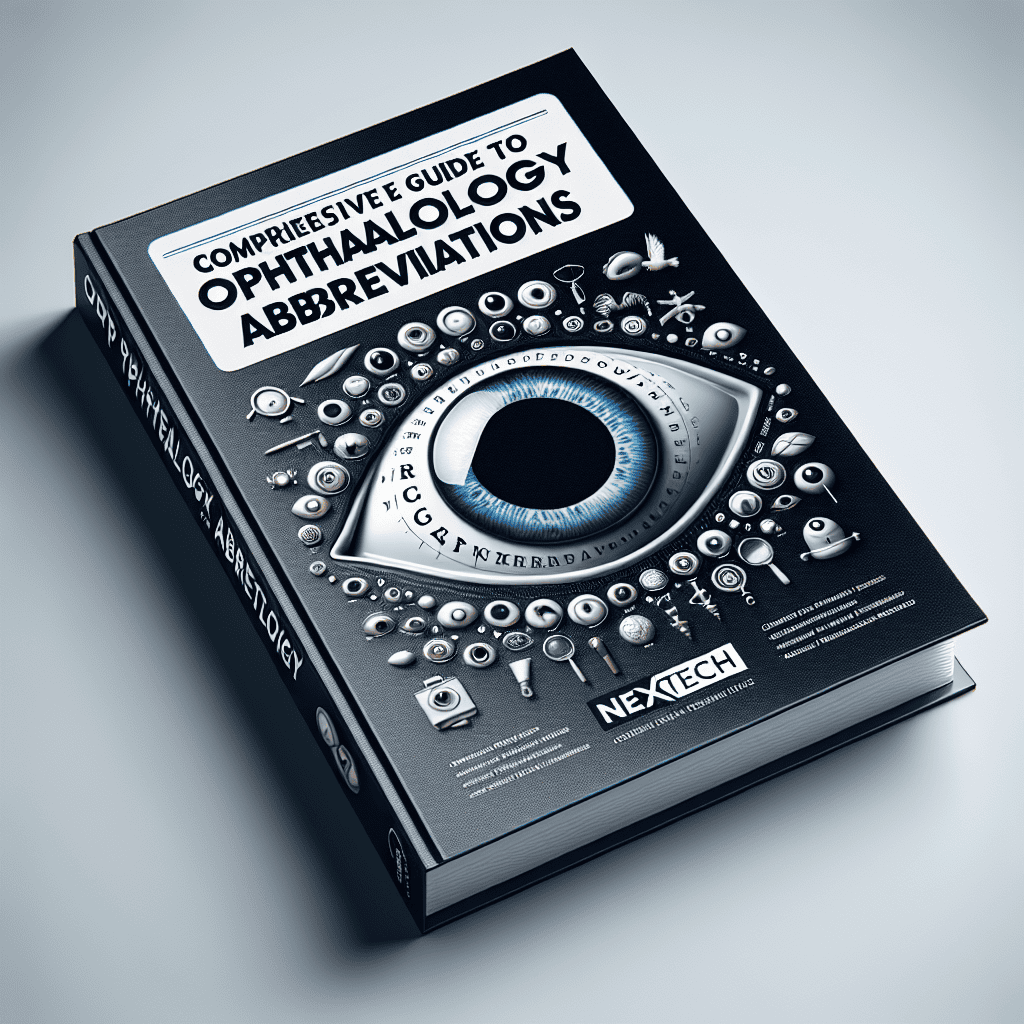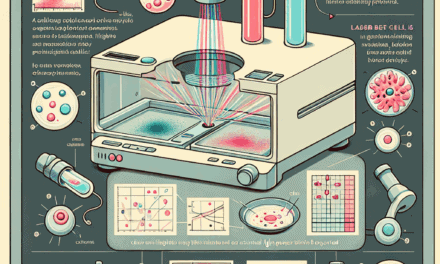Comprehensive Guide to Ophthalmology Abbreviations | Nextech

Ophthalmology is a specialized field of medicine that focuses on the diagnosis, treatment, and prevention of eye disorders. As with many medical specialties, ophthalmology uses a wide array of abbreviations to streamline communication among healthcare professionals. These abbreviations are essential for efficient documentation and communication but can be confusing for those not familiar with the field. This comprehensive guide aims to demystify ophthalmology abbreviations, providing valuable insights into their meanings and applications, particularly in the context of Nextech, a leading provider of healthcare technology solutions.
Understanding Ophthalmology Abbreviations
Ophthalmology abbreviations are shorthand notations used by eye care professionals to quickly and accurately document patient information, diagnoses, and treatment plans. These abbreviations are crucial in ensuring that patient records are concise and easily interpretable by other healthcare providers. In this section, we will explore the importance of these abbreviations, their common usage, and how they contribute to effective patient care.
The Importance of Abbreviations in Ophthalmology
Abbreviations in ophthalmology serve several critical functions. They help streamline communication, reduce the risk of errors, and save time in clinical settings. By using standardized abbreviations, ophthalmologists can ensure that their notes are easily understood by other healthcare professionals, facilitating better coordination of care.
For example, abbreviations like “OD” (oculus dexter) and “OS” (oculus sinister) are used to denote the right and left eyes, respectively. These terms are universally recognized in the field, allowing for quick and accurate documentation. Similarly, “IOP” stands for intraocular pressure, a key measurement in diagnosing and managing glaucoma.
Moreover, abbreviations are essential in electronic health records (EHR) systems like Nextech, where space is limited, and clarity is paramount. By using standardized abbreviations, ophthalmologists can ensure that their notes are concise and easily interpretable by other healthcare providers, facilitating better coordination of care.
Commonly Used Ophthalmology Abbreviations
There are numerous abbreviations used in ophthalmology, each serving a specific purpose. Some of the most commonly used abbreviations include:
- OD/OS/OU: Refers to the right eye, left eye, and both eyes, respectively.
- IOP: Intraocular pressure, a critical measurement in glaucoma management.
- VA: Visual acuity, a measure of the clarity of vision.
- C/D: Cup-to-disc ratio, used in assessing the optic nerve for glaucoma.
- RE/LE: Right eye and left eye, often used interchangeably with OD and OS.
These abbreviations are integral to the practice of ophthalmology, allowing for efficient communication and documentation. Understanding these terms is essential for anyone working in or interacting with the field.
Case Study: The Role of Abbreviations in Glaucoma Management
Glaucoma is a group of eye conditions that damage the optic nerve, often due to high intraocular pressure (IOP). Effective management of glaucoma relies heavily on accurate and timely documentation, where abbreviations play a crucial role.
Consider a patient with glaucoma who visits an ophthalmologist for a routine check-up. The ophthalmologist measures the patient’s IOP and notes it in the EHR using the abbreviation “IOP.” They also assess the cup-to-disc ratio (C/D) to evaluate the health of the optic nerve. By using these abbreviations, the ophthalmologist can quickly document the patient’s condition and share this information with other healthcare providers involved in the patient’s care.
This streamlined communication is vital in managing chronic conditions like glaucoma, where regular monitoring and timely interventions are crucial to preventing vision loss.
Statistics on Abbreviation Usage in Ophthalmology
According to a study published in the Journal of the American Medical Association (JAMA), the use of standardized abbreviations in medical documentation can reduce errors by up to 30%. In ophthalmology, where precise measurements and observations are critical, the use of abbreviations is particularly beneficial.
The study also found that healthcare providers who regularly use standardized abbreviations report higher levels of satisfaction with their documentation processes. This is because abbreviations allow for quicker note-taking and reduce the cognitive load on providers, enabling them to focus more on patient care.
These findings underscore the importance of understanding and correctly using ophthalmology abbreviations, both for healthcare providers and patients who wish to be more informed about their care.
Challenges and Solutions in Using Ophthalmology Abbreviations
While abbreviations are invaluable in ophthalmology, they can also pose challenges, particularly for those new to the field or for patients trying to understand their medical records. Misinterpretation of abbreviations can lead to errors in diagnosis or treatment, underscoring the need for standardized usage and education.
One solution to this challenge is the implementation of comprehensive training programs for healthcare providers, ensuring that they are familiar with the most commonly used abbreviations and their meanings. Additionally, EHR systems like Nextech can incorporate features that automatically expand abbreviations into their full terms, reducing the risk of misinterpretation.
For patients, providing educational resources that explain common ophthalmology abbreviations can empower them to take a more active role in their healthcare. By understanding the terminology used in their medical records, patients can better communicate with their healthcare providers and make informed decisions about their care.
Ophthalmology Abbreviations in Nextech
Nextech is a leading provider of healthcare technology solutions, offering a comprehensive electronic health records (EHR) system tailored to the needs of ophthalmologists. In this section, we will explore how Nextech incorporates ophthalmology abbreviations into its platform, enhancing the efficiency and accuracy of patient care.
Integration of Abbreviations in Nextech EHR
Nextech’s EHR system is designed to streamline the documentation process for ophthalmologists, incorporating a wide range of ophthalmology-specific abbreviations. This integration allows healthcare providers to quickly and accurately document patient information, diagnoses, and treatment plans.
For example, when entering a patient’s visual acuity, an ophthalmologist can use the abbreviation “VA” in Nextech’s system. The platform recognizes this abbreviation and automatically associates it with the appropriate field, ensuring that the information is accurately recorded and easily accessible.
This seamless integration of abbreviations not only saves time but also reduces the risk of errors, as the system is designed to recognize and interpret commonly used terms in ophthalmology.
Customizing Abbreviations in Nextech
One of the key features of Nextech’s EHR system is its flexibility in allowing healthcare providers to customize abbreviations to suit their specific needs. This customization ensures that the platform can accommodate the unique preferences and practices of individual ophthalmologists or clinics.
For instance, a clinic may prefer to use “RE” and “LE” instead of “OD” and “OS” to denote the right and left eyes. Nextech’s system allows users to set these preferences, ensuring that the documentation process aligns with their established practices.
This level of customization is particularly beneficial for larger practices or healthcare systems where multiple providers may have different preferences for abbreviation usage. By accommodating these preferences, Nextech enhances the usability and efficiency of its EHR system.
Case Study: Improving Efficiency with Nextech Abbreviations
A large ophthalmology practice implemented Nextech’s EHR system to improve its documentation processes. Before adopting Nextech, the practice faced challenges with inconsistent abbreviation usage, leading to confusion and errors in patient records.
With Nextech, the practice was able to standardize its abbreviation usage, ensuring that all providers used the same terms and notations. This standardization led to a significant reduction in documentation errors and improved communication among providers.
Additionally, the practice took advantage of Nextech’s customization features, allowing individual providers to set their preferred abbreviations. This flexibility ensured that all providers were comfortable with the system, further enhancing its efficiency and effectiveness.
Statistics on Nextech’s Impact on Ophthalmology Practices
According to a survey conducted by Nextech, practices that implemented its EHR system reported a 25% reduction in documentation time and a 30% decrease in errors related to abbreviation usage. These improvements were attributed to the platform’s integration of ophthalmology-specific abbreviations and its customization features.
The survey also found that 90% of users reported increased satisfaction with their documentation processes after adopting Nextech. This high level of satisfaction underscores the platform’s effectiveness in meeting the unique needs of ophthalmology practices.
These statistics highlight the significant impact that Nextech’s EHR system can have on ophthalmology practices, improving efficiency, accuracy, and provider satisfaction.
Challenges and Solutions in Implementing Nextech Abbreviations
While Nextech offers numerous benefits for ophthalmology practices, implementing its EHR system can present challenges, particularly for practices transitioning from paper-based records or other EHR platforms.
One common challenge is the learning curve associated with adopting a new system. To address this, Nextech provides comprehensive training and support for its users, ensuring that they are comfortable with the platform and its features.
Another challenge is ensuring consistent abbreviation usage across a practice. Nextech addresses this by offering customization options and standardized templates, helping practices establish and maintain consistent documentation practices.
By addressing these challenges, Nextech ensures that its EHR system can be effectively implemented in ophthalmology practices, maximizing its benefits for providers and patients alike.
Best Practices for Using Ophthalmology Abbreviations
To maximize the benefits of ophthalmology abbreviations, it is essential to follow best practices that ensure their accurate and effective use. In this section, we will explore key strategies for using abbreviations in ophthalmology, focusing on standardization, education, and technology integration.
Standardizing Abbreviation Usage
Standardization is crucial in ensuring that ophthalmology abbreviations are used consistently and accurately across a practice or healthcare system. By establishing standardized abbreviation lists and guidelines, practices can reduce the risk of errors and improve communication among providers.
One effective strategy for standardization is to develop a comprehensive list of commonly used abbreviations and their meanings. This list should be regularly updated to reflect changes in terminology and practice. Additionally, practices can implement standardized templates for documentation, ensuring that all providers use the same abbreviations and notations.
By standardizing abbreviation usage, practices can enhance the clarity and accuracy of their documentation, ultimately improving patient care.
Educating Healthcare Providers
Education is a critical component of effective abbreviation usage in ophthalmology. Healthcare providers must be familiar with the most commonly used abbreviations and their meanings to ensure accurate documentation and communication.
Practices can implement training programs for new providers, ensuring that they are familiar with the established abbreviation guidelines. Additionally, ongoing education and refresher courses can help providers stay up-to-date with changes in terminology and best practices.
By prioritizing education, practices can ensure that their providers are well-equipped to use ophthalmology abbreviations effectively, reducing the risk of errors and improving patient care.
Integrating Technology Solutions
Technology plays a vital role in facilitating the effective use of ophthalmology abbreviations. EHR systems like Nextech offer features that streamline documentation processes and reduce the risk of errors associated with abbreviation usage.
For example, Nextech’s system automatically recognizes and interprets commonly used abbreviations, ensuring that they are accurately recorded in patient records. Additionally, the platform offers customization options, allowing practices to tailor abbreviation usage to their specific needs.
By integrating technology solutions like Nextech, practices can enhance the efficiency and accuracy of their documentation processes, ultimately improving patient care.
Case Study: Implementing Best Practices in an Ophthalmology Practice
An ophthalmology practice sought to improve its documentation processes by implementing best practices for abbreviation usage. The practice developed a standardized list of abbreviations and provided training for its providers, ensuring that they were familiar with the established guidelines.
The practice also implemented Nextech’s EHR system, taking advantage of its features to streamline documentation processes. By integrating these best practices, the practice achieved a significant reduction in documentation errors and improved communication among providers.
This case study highlights the importance of standardization, education, and technology integration in maximizing the benefits of ophthalmology abbreviations.
Challenges and Solutions in Implementing Best Practices
Implementing best practices for ophthalmology abbreviations can present challenges, particularly for practices transitioning from paper-based records or other EHR platforms. Common challenges include resistance to change, the learning curve associated with new systems, and ensuring consistent abbreviation usage across a practice.
To address these challenges, practices can provide comprehensive training and support for their providers, ensuring that they are comfortable with the new systems and guidelines. Additionally, practices can implement standardized templates and regularly update their abbreviation lists to reflect changes in terminology and practice.
By addressing these challenges, practices can effectively implement best practices for ophthalmology abbreviations, maximizing their benefits for providers and patients alike.
The Future of Ophthalmology Abbreviations
As technology continues to advance, the use of abbreviations in ophthalmology is likely to evolve. In this section, we will explore potential future developments in abbreviation usage, focusing on emerging technologies, trends, and innovations that may shape the field.
Emerging Technologies in Ophthalmology
Emerging technologies such as artificial intelligence (AI) and machine learning are poised to revolutionize the field of ophthalmology. These technologies have the potential to enhance the accuracy and efficiency of documentation processes, including the use of abbreviations.
For example, AI-powered systems can automatically recognize and interpret abbreviations in patient records, reducing the risk of errors and improving communication among providers. Additionally, machine learning algorithms can analyze large datasets to identify patterns and trends in abbreviation usage, helping practices optimize their documentation processes.
As these technologies continue to develop, they are likely to play an increasingly important role in shaping the future of ophthalmology abbreviations.
Trends in Abbreviation Usage
Several trends are likely to influence the future of abbreviation usage in ophthalmology. One such trend is the increasing emphasis on patient-centered care, which may lead to greater transparency and accessibility in medical documentation.
As patients become more involved in their healthcare decisions, there may be a growing demand for clear and understandable medical records. This trend could lead to changes in abbreviation usage, with a focus on simplifying terminology and improving patient education.
Another trend is the growing use of telemedicine and remote consultations, which may require new abbreviations and notations to facilitate communication between providers and patients. As telemedicine continues to expand, practices may need to adapt their abbreviation usage to accommodate these new modes of care.
Innovations in EHR Systems
EHR systems like Nextech are continually evolving to meet the changing needs of healthcare providers and patients. Innovations in these systems are likely to impact the use of abbreviations in ophthalmology, offering new features and capabilities that enhance documentation processes.
For example, future EHR systems may incorporate advanced natural language processing (NLP) technologies that can automatically expand abbreviations into their full terms, improving clarity and reducing the risk of misinterpretation. Additionally, these systems may offer enhanced customization options, allowing practices to tailor abbreviation usage to their specific needs.
As EHR systems continue to innovate, they are likely to play a key role in shaping the future of ophthalmology abbreviations.
Case Study: Adapting to Future Developments in Abbreviation Usage
An ophthalmology practice sought to stay ahead of emerging trends and technologies by proactively adapting its abbreviation usage. The practice implemented AI-powered systems to enhance its documentation processes and regularly updated its abbreviation guidelines to reflect changes in terminology and practice.
By staying informed about emerging trends and technologies, the practice was able to optimize its documentation processes and improve patient care. This case study highlights the importance of adaptability and innovation in preparing for the future of ophthalmology abbreviations.
Challenges and Solutions in Adapting to Future Developments
Adapting to future developments in abbreviation usage can present challenges, particularly for practices that are resistant to change or lack the resources to invest in new technologies. Common challenges include the cost of implementing new systems, the learning curve associated with emerging technologies, and ensuring consistent abbreviation usage across a practice.
To address these challenges, practices can prioritize ongoing education and training for their providers, ensuring that they are familiar with emerging trends and technologies. Additionally, practices can seek out partnerships with technology providers like Nextech to access the latest innovations and support.
By addressing these challenges, practices can effectively adapt to future developments in ophthalmology abbreviations, maximizing their benefits for providers and patients alike.
Conclusion
Ophthalmology abbreviations play a crucial role in the efficient and accurate documentation of patient care. By understanding and effectively using these abbreviations, healthcare providers can enhance communication, reduce errors, and improve patient outcomes. Nextech’s EHR system offers valuable tools and features that streamline abbreviation usage, providing significant benefits for ophthalmology practices.
As technology continues to advance, the use of abbreviations in ophthalmology is likely to evolve. By staying informed about emerging trends and technologies, practices can optimize their documentation processes and prepare for the future of ophthalmology abbreviations. Through standardization, education, and technology integration, healthcare providers can maximize the benefits of abbreviations, ultimately improving patient care and satisfaction.





